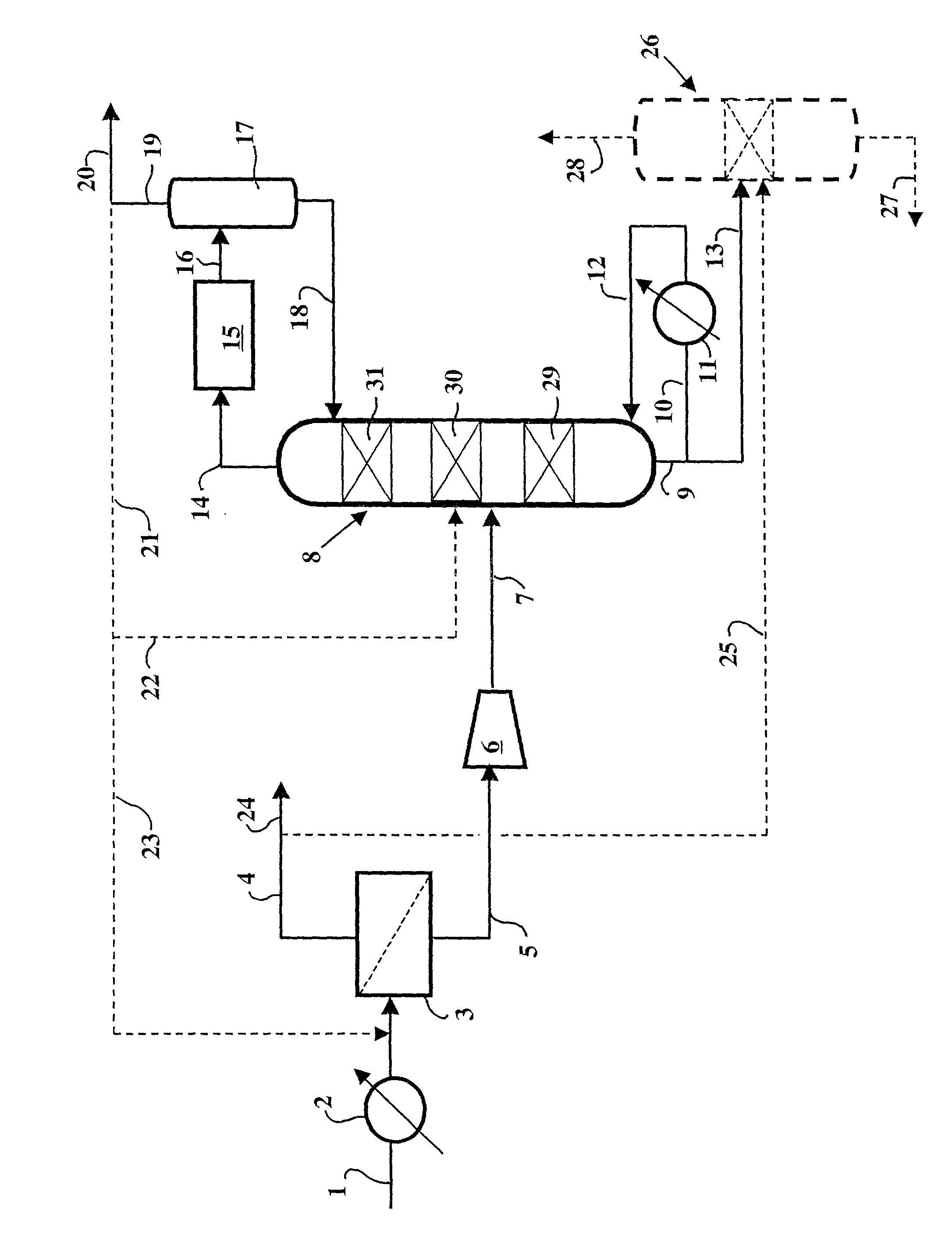Selective hydrogenation process comprising partial separation of hydrogen by a membrane upstream of a reactive column
- Summary
- Abstract
- Description
- Claims
- Application Information
AI Technical Summary
Problems solved by technology
Method used
Image
Examples
example 2
[0082] (In Accordance with the Invention):
[0083] In this example, the feed to be separated in step a) of the process was a C.sub.1-C.sub.6 feed identical to that of Example 1, but the separation conditions were modified. The membrane used was a polyaramide membrane, the separation temperature was 60.degree. C., the pressure upstream of the membrane was 6 MPa, and the pressure downstream of the membrane was 0.2 MPa.
2TABLE 2 Flow rates and compositions of streams resulting from membrane separation of a C.sub.1-C.sub.6 feed from steam cracking with a flow rate of 150 t / h. (Temperature: 80.degree. C.; upstream pressure: 6 MPa; BD = butadiene) Feed Feed Permeate Permeate Retentate Retentate (kmol / h) (mole %) (kmol / h) (mole %) (kmol / h) (mole %) H.sub.2 676.00 12.14 235.00 97.19 441.00 8.28 CH.sub.4 1654.90 29.72 2.30 0.95 1652.60 31.03 C.sub.2H.sub.4 1648.77 29.61 2.29 0.95 1646.48 30.91 C.sub.2H.sub.6 300.69 5.40 0.42 0.17 300.27 5.64 C.sub.3H.sub.6 642.02 11.53 0.89 0.37 641.13 12.04 C....
PUM
 Login to View More
Login to View More Abstract
Description
Claims
Application Information
 Login to View More
Login to View More - R&D Engineer
- R&D Manager
- IP Professional
- Industry Leading Data Capabilities
- Powerful AI technology
- Patent DNA Extraction
Browse by: Latest US Patents, China's latest patents, Technical Efficacy Thesaurus, Application Domain, Technology Topic, Popular Technical Reports.
© 2024 PatSnap. All rights reserved.Legal|Privacy policy|Modern Slavery Act Transparency Statement|Sitemap|About US| Contact US: help@patsnap.com








